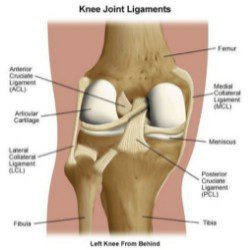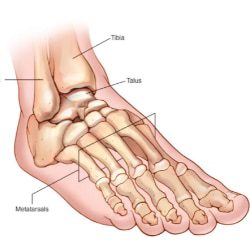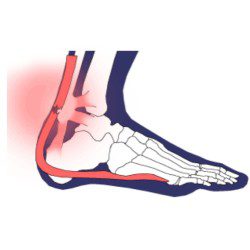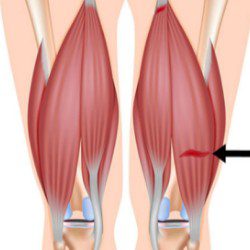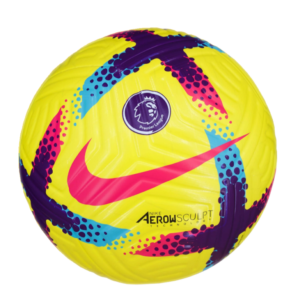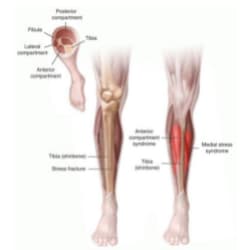
Shin Splints
A Shin splints injury occurs when the calf muscles repeatedly pull on the inside of the shin bone. This causes the muscles to become inflamed and swollen.
As grassroots football has increased in popularity as a participation sport, so have the number of foot, shin and knee related injuries.
Experts believe that, at least in part, the typical construction of modern football boots and the associated effects on the body are to blame.
To help accommodate the blades, moulded or metal studs into the boot, the designs are constructed with a flat footbed. The issue with this type of design is that it delivers a lack of support along the mid foot arch which results in pronation or supination. Other issues include reduced cushioning and less shock absorption on heel strikes.
This lack of shock absorption can lead to common football injuries such as heel pain, shin splints and pain in the knee.
What are shin splints?
Shin splints are an inflammation of the shin area. The injury typically affects the part of the shin 6 inches above your ankle joint. If you have pain in this area and it feels tender when pressed upon, it’s possible that you have shin splints.
Why do shin splints occur?
Shin splints occur when the calf muscles repeatedly pull on the inside of the shin bone. This causes the muscles to become inflamed and swollen. A lot of different causes may to be blame including tight or weak calf muscles, worn-out or incorrectly fitting running shoes or football boots.
Other causes can include too much training taking place on hard surfaces where greater shock is applied to the body or a change in the training load or types of exercises carried out.
Who gets this injury?
For a new football player or someone returning to the game after a break, they may pick up this injury when starting a new more intensive fitness schedule. A semi-professional or full-time footballer may suffer from shin splints if they undergo intensive training and cover lots of mileage. As mentioned, those wearing boots or training shoes that do not fit correctly may also suffer from this injury.
What is the best treatment for shin splints?
Generally it is recommended that players should rest for 7 – 10 days to allow the swelling to go down.
RICE (rest, ice, compression, elevation) should be used to help speed up recovery and reduce the pain of the injury.
Semi-professionals or pros may also want to think about changing their training regimes to reduce stress on the shins.
The use of orthotics in football boots can increase the comfort levels and the performance of the boot, reduce shock and the likeliness of injury and can also help in reducing fatigue levels. Football boot orthotics can be incorporated into an overall injury treatment or prevention program.
Always consult a doctor or qualified professional for personalised medical advice on injuries and treatments.

